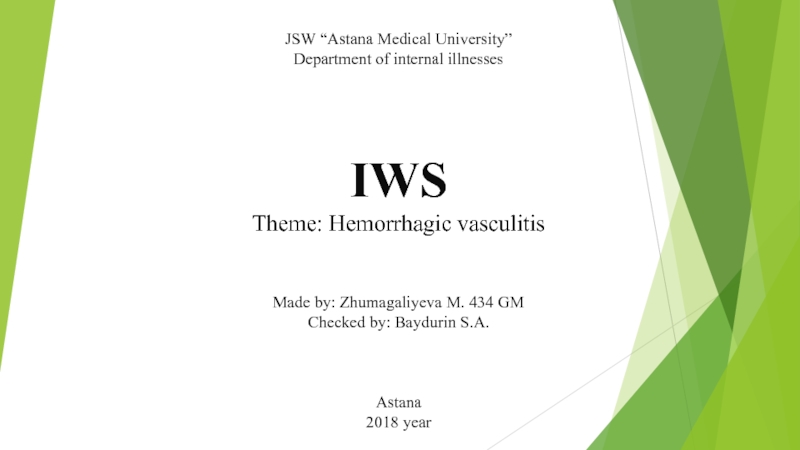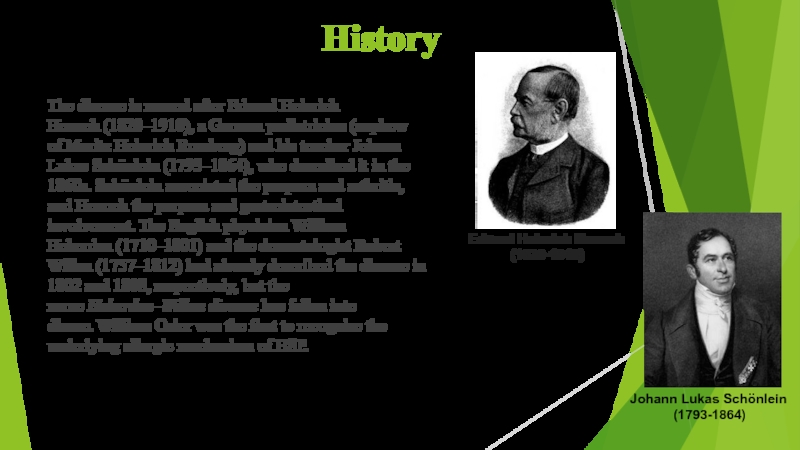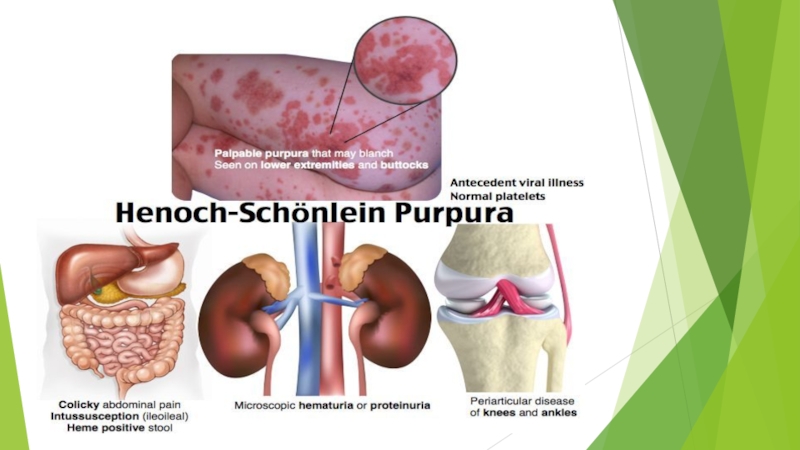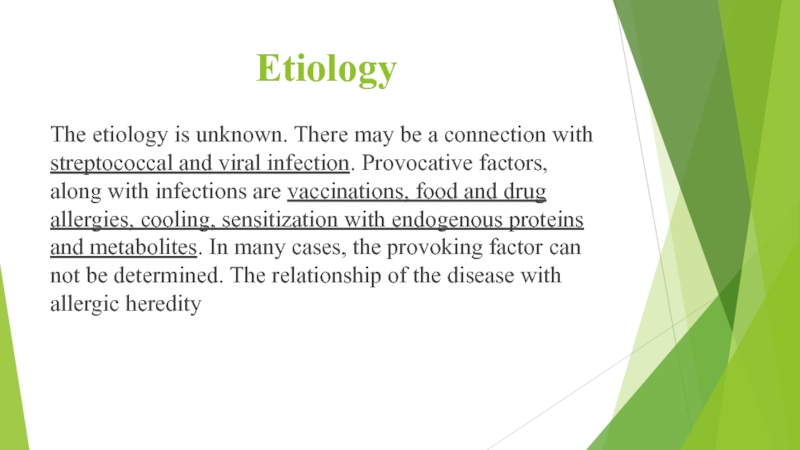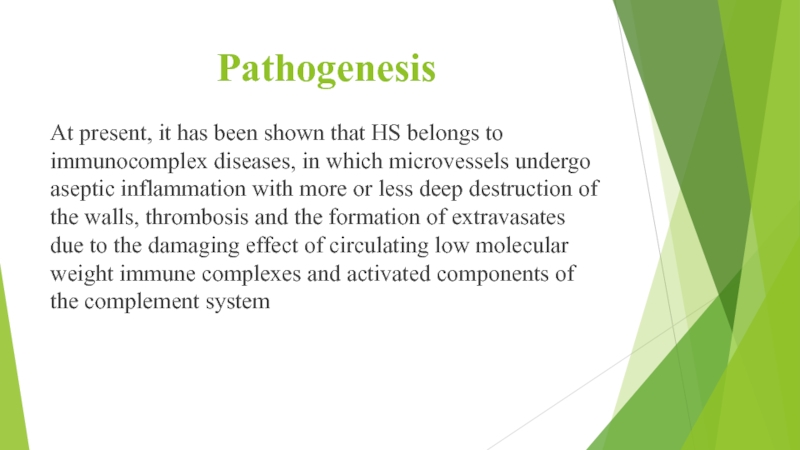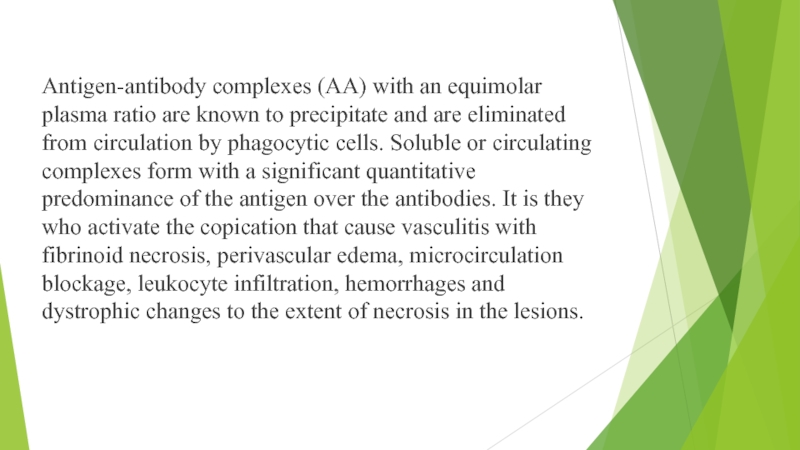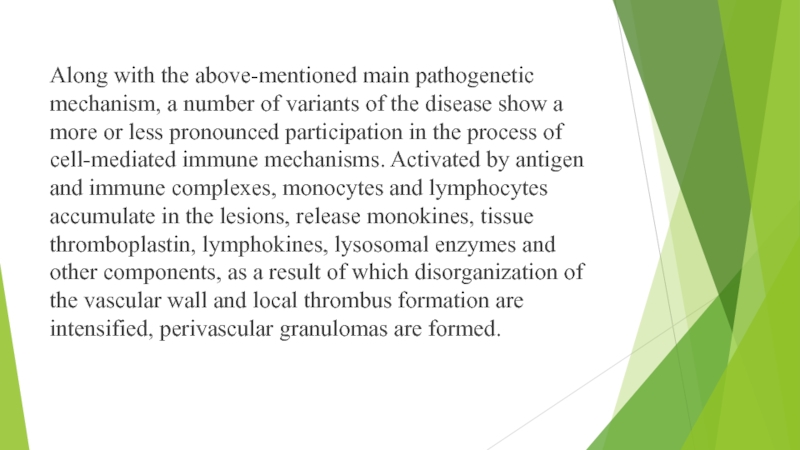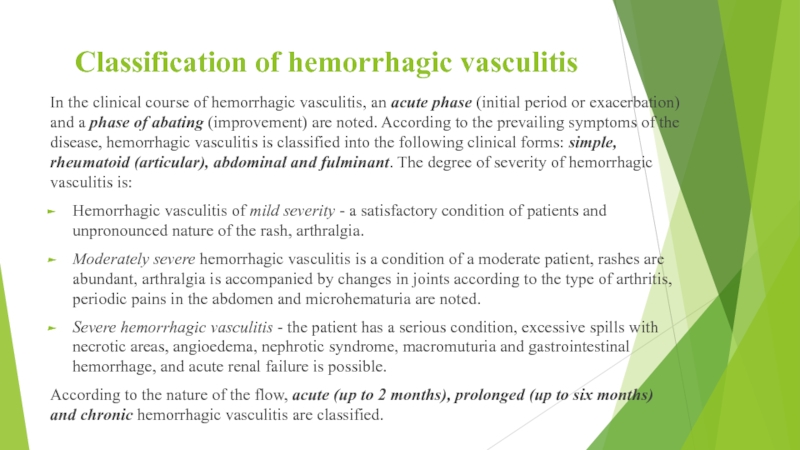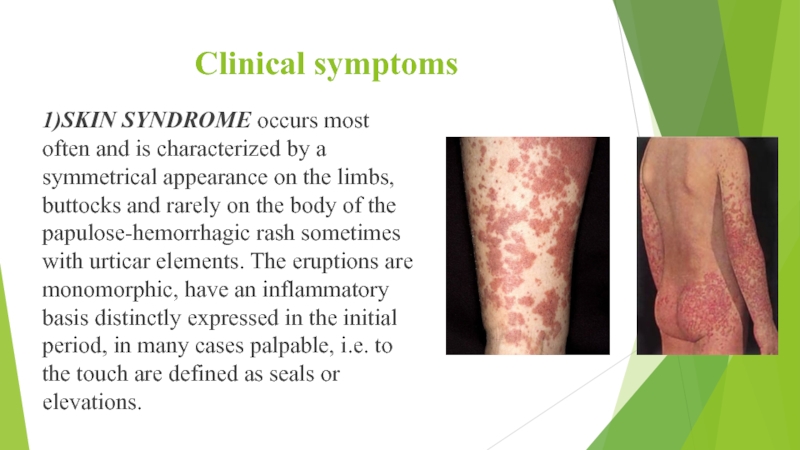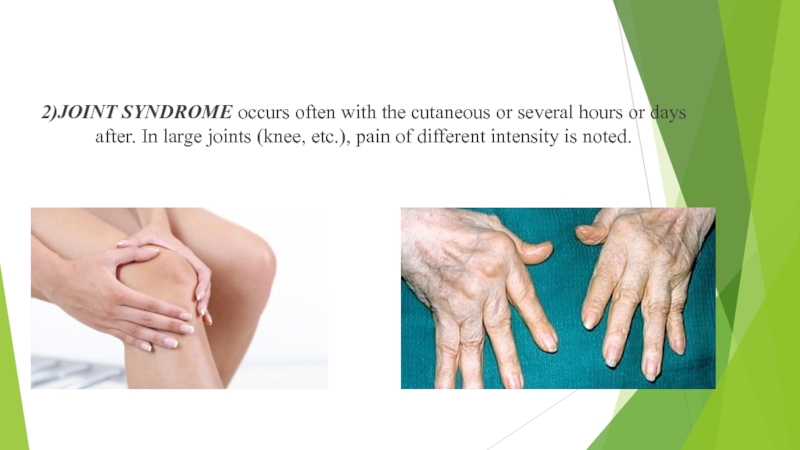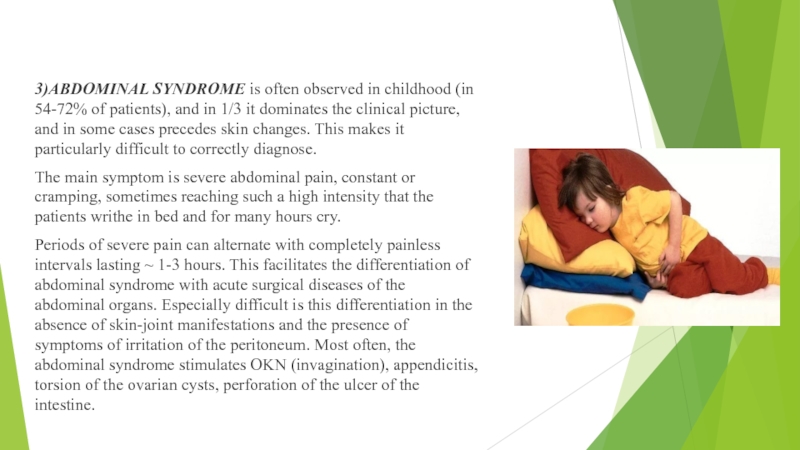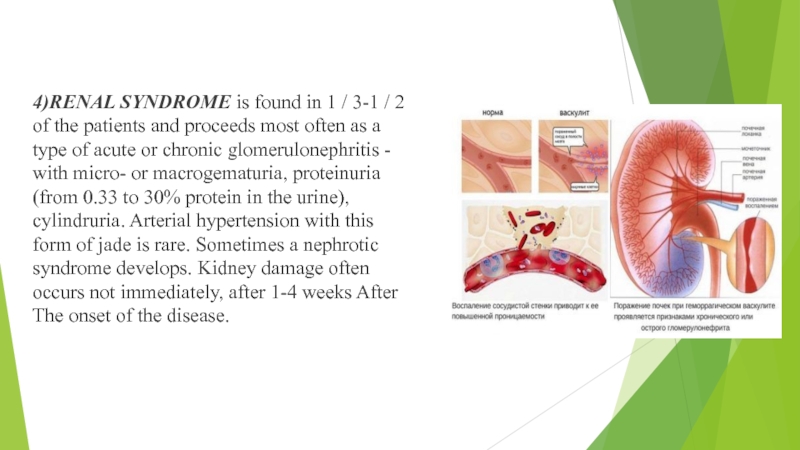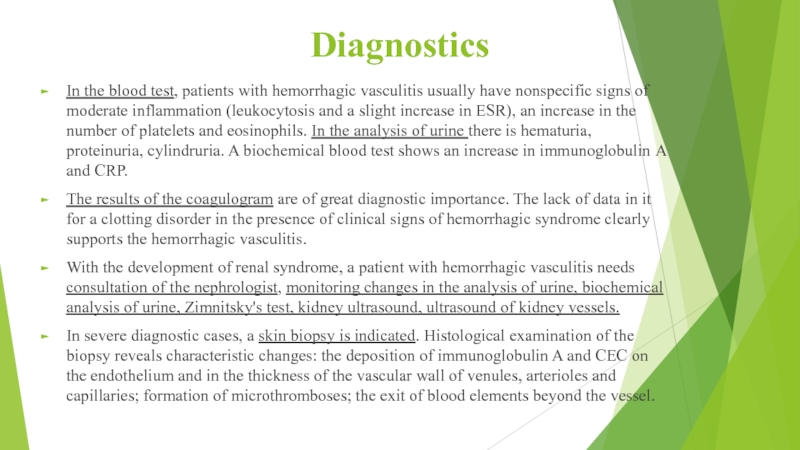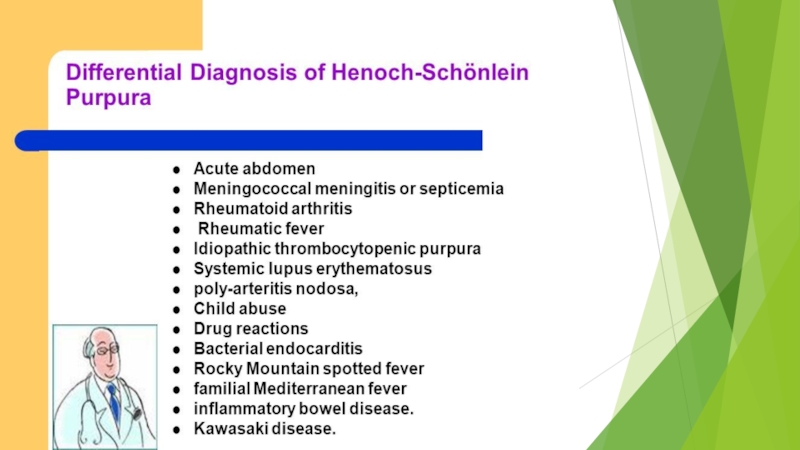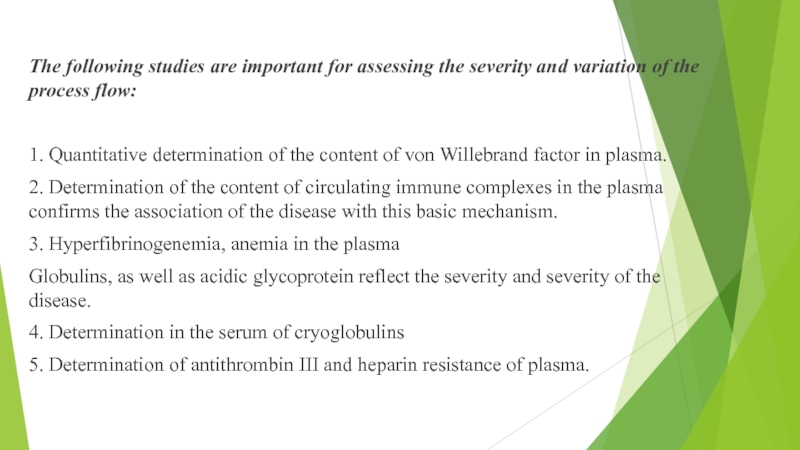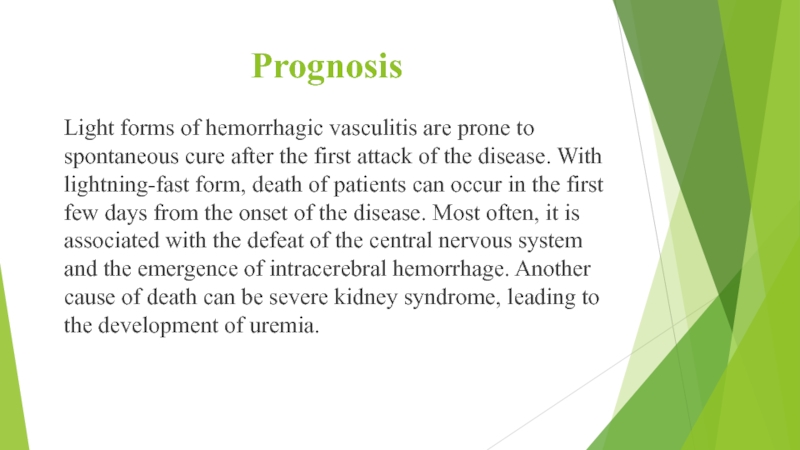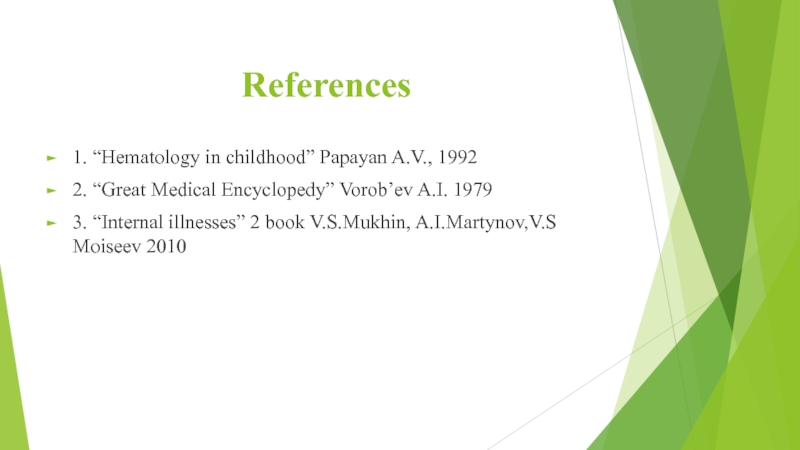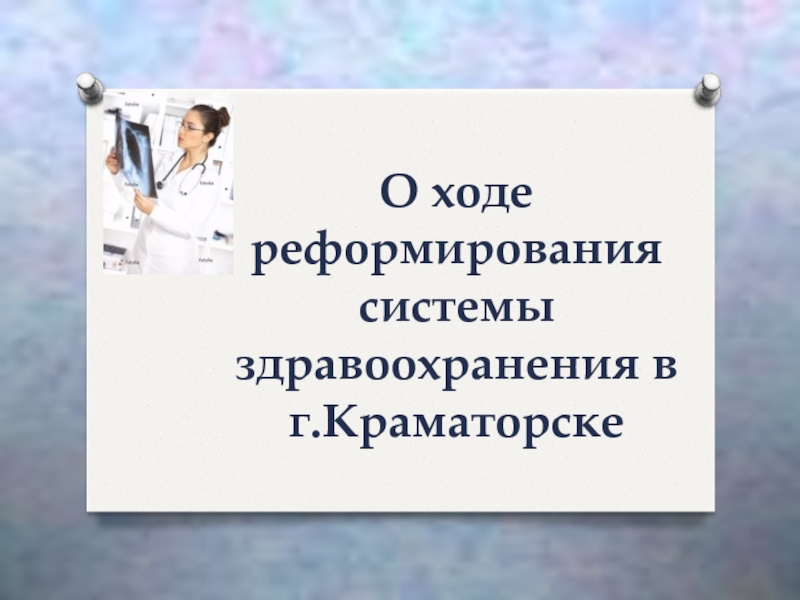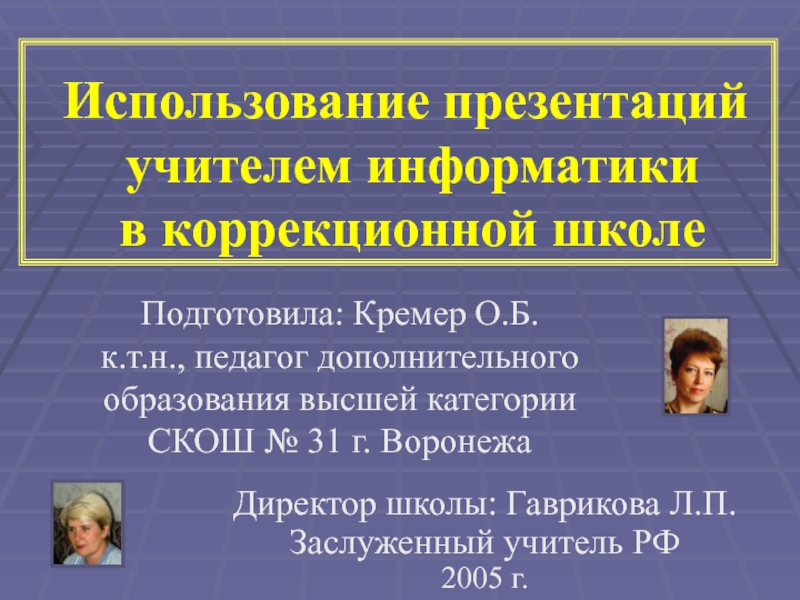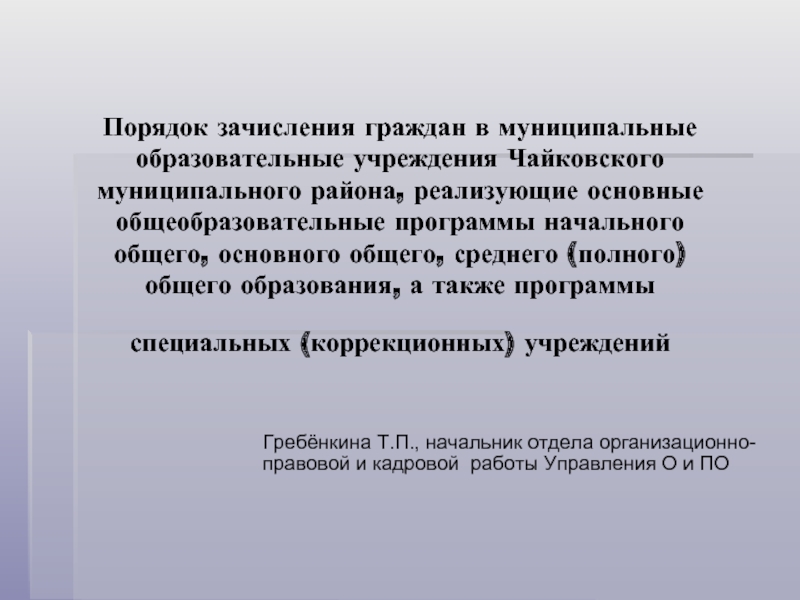Zhumagaliyeva M. 434 GM
Checked by: Baydurin S.A.
Astana
2018 year
- Главная
- Разное
- Дизайн
- Бизнес и предпринимательство
- Аналитика
- Образование
- Развлечения
- Красота и здоровье
- Финансы
- Государство
- Путешествия
- Спорт
- Недвижимость
- Армия
- Графика
- Культурология
- Еда и кулинария
- Лингвистика
- Английский язык
- Астрономия
- Алгебра
- Биология
- География
- Детские презентации
- Информатика
- История
- Литература
- Маркетинг
- Математика
- Медицина
- Менеджмент
- Музыка
- МХК
- Немецкий язык
- ОБЖ
- Обществознание
- Окружающий мир
- Педагогика
- Русский язык
- Технология
- Физика
- Философия
- Химия
- Шаблоны, картинки для презентаций
- Экология
- Экономика
- Юриспруденция
hemorrhagic vasculitis презентация
Содержание
- 1. hemorrhagic vasculitis
- 2. History The disease is named after Eduard Heinrich Henoch (1820–1910),
- 3. Henoch–Schönlein purpura (HSP), also known as IgA vasculitis, anaphylactoid purpura, purpura rheumatica, and Schönlein–Henoch
- 5. Etiology The etiology is unknown. There may
- 7. Pathogenesis At present, it has been shown
- 8. Antigen-antibody complexes (AA) with an equimolar plasma
- 9. Along with the above-mentioned main pathogenetic mechanism,
- 10. Pathogenesis of HSP
- 11. Classification of hemorrhagic vasculitis In the
- 12. Clinical symptoms 1)SKIN SYNDROME occurs most often
- 13. 2)JOINT SYNDROME occurs often with the
- 14. 3)ABDOMINAL SYNDROME is often observed in childhood
- 15. 4)RENAL SYNDROME is found in 1 /
- 16. Diagnostics In the blood test, patients with
- 18. The following studies are important for assessing
- 19. Treatment Patients with signs of hemorrhagic vasculitis
- 20. Prognosis Light forms of hemorrhagic vasculitis are
- 21. References 1. “Hematology in childhood” Papayan A.V.,
Слайд 1JSW “Astana Medical University” Department of internal illnesses IWS Theme: Hemorrhagic vasculitis Made by:
Слайд 2History
The disease is named after Eduard Heinrich Henoch (1820–1910), a German pediatrician (nephew of Moritz Heinrich Romberg)
and his teacher Johann Lukas Schönlein (1793–1864), who described it in the 1860s. Schönlein associated the purpura and arthritis, and Henoch the purpura and gastrointestinal involvement. The English physician William Heberden (1710–1801) and the dermatologist Robert Willan (1757–1812) had already described the disease in 1802 and 1808, respectively, but the name Heberden–Willan disease has fallen into disuse. William Osler was the first to recognise the underlying allergic mechanism of HSP.
Eduard Heinrich Henoch
(1820-1910)
Johann Lukas Schönlein
(1793-1864)
Слайд 3Henoch–Schönlein purpura (HSP), also known as IgA vasculitis, anaphylactoid purpura, purpura rheumatica, and Schönlein–Henoch purpura,is a disease of
the skin, mucous membranes, and sometimes other organs that most commonly affects children. In the skin, the disease causes palpable purpura(small, raised areas of bleeding underneath the skin), often with joint pain and abdominal pain. With kidney involvement, there may be a loss of small amounts of blood and protein in the urine (hematuria and proteinuria), but this usually goes unnoticed; in a small proportion of cases, the kidney involvement proceeds to chronic kidney disease.
Слайд 5Etiology
The etiology is unknown. There may be a connection with streptococcal
and viral infection. Provocative factors, along with infections are vaccinations, food and drug allergies, cooling, sensitization with endogenous proteins and metabolites. In many cases, the provoking factor can not be determined. The relationship of the disease with allergic heredity
Слайд 7Pathogenesis
At present, it has been shown that HS belongs to immunocomplex
diseases, in which microvessels undergo aseptic inflammation with more or less deep destruction of the walls, thrombosis and the formation of extravasates due to the damaging effect of circulating low molecular weight immune complexes and activated components of the complement system
Слайд 8Antigen-antibody complexes (AA) with an equimolar plasma ratio are known to
precipitate and are eliminated from circulation by phagocytic cells. Soluble or circulating complexes form with a significant quantitative predominance of the antigen over the antibodies. It is they who activate the copication that cause vasculitis with fibrinoid necrosis, perivascular edema, microcirculation blockage, leukocyte infiltration, hemorrhages and dystrophic changes to the extent of necrosis in the lesions.
Слайд 9Along with the above-mentioned main pathogenetic mechanism, a number of variants
of the disease show a more or less pronounced participation in the process of cell-mediated immune mechanisms. Activated by antigen and immune complexes, monocytes and lymphocytes accumulate in the lesions, release monokines, tissue thromboplastin, lymphokines, lysosomal enzymes and other components, as a result of which disorganization of the vascular wall and local thrombus formation are intensified, perivascular granulomas are formed.
Слайд 11Classification of hemorrhagic vasculitis
In the clinical course of hemorrhagic vasculitis, an
acute phase (initial period or exacerbation) and a phase of abating (improvement) are noted. According to the prevailing symptoms of the disease, hemorrhagic vasculitis is classified into the following clinical forms: simple, rheumatoid (articular), abdominal and fulminant. The degree of severity of hemorrhagic vasculitis is:
Hemorrhagic vasculitis of mild severity - a satisfactory condition of patients and unpronounced nature of the rash, arthralgia.
Moderately severe hemorrhagic vasculitis is a condition of a moderate patient, rashes are abundant, arthralgia is accompanied by changes in joints according to the type of arthritis, periodic pains in the abdomen and microhematuria are noted.
Severe hemorrhagic vasculitis - the patient has a serious condition, excessive spills with necrotic areas, angioedema, nephrotic syndrome, macromuturia and gastrointestinal hemorrhage, and acute renal failure is possible.
According to the nature of the flow, acute (up to 2 months), prolonged (up to six months) and chronic hemorrhagic vasculitis are classified.
Hemorrhagic vasculitis of mild severity - a satisfactory condition of patients and unpronounced nature of the rash, arthralgia.
Moderately severe hemorrhagic vasculitis is a condition of a moderate patient, rashes are abundant, arthralgia is accompanied by changes in joints according to the type of arthritis, periodic pains in the abdomen and microhematuria are noted.
Severe hemorrhagic vasculitis - the patient has a serious condition, excessive spills with necrotic areas, angioedema, nephrotic syndrome, macromuturia and gastrointestinal hemorrhage, and acute renal failure is possible.
According to the nature of the flow, acute (up to 2 months), prolonged (up to six months) and chronic hemorrhagic vasculitis are classified.
Слайд 12Clinical symptoms
1)SKIN SYNDROME occurs most often and is characterized by a
symmetrical appearance on the limbs, buttocks and rarely on the body of the papulose-hemorrhagic rash sometimes with urticar elements. The eruptions are monomorphic, have an inflammatory basis distinctly expressed in the initial period, in many cases palpable, i.e. to the touch are defined as seals or elevations.
Слайд 13
2)JOINT SYNDROME occurs often with the cutaneous or several hours or
days after. In large joints (knee, etc.), pain of different intensity is noted.
Слайд 143)ABDOMINAL SYNDROME is often observed in childhood (in 54-72% of patients),
and in 1/3 it dominates the clinical picture, and in some cases precedes skin changes. This makes it particularly difficult to correctly diagnose.
The main symptom is severe abdominal pain, constant or cramping, sometimes reaching such a high intensity that the patients writhe in bed and for many hours cry.
Periods of severe pain can alternate with completely painless intervals lasting ~ 1-3 hours. This facilitates the differentiation of abdominal syndrome with acute surgical diseases of the abdominal organs. Especially difficult is this differentiation in the absence of skin-joint manifestations and the presence of symptoms of irritation of the peritoneum. Most often, the abdominal syndrome stimulates OKN (invagination), appendicitis, torsion of the ovarian cysts, perforation of the ulcer of the intestine.
The main symptom is severe abdominal pain, constant or cramping, sometimes reaching such a high intensity that the patients writhe in bed and for many hours cry.
Periods of severe pain can alternate with completely painless intervals lasting ~ 1-3 hours. This facilitates the differentiation of abdominal syndrome with acute surgical diseases of the abdominal organs. Especially difficult is this differentiation in the absence of skin-joint manifestations and the presence of symptoms of irritation of the peritoneum. Most often, the abdominal syndrome stimulates OKN (invagination), appendicitis, torsion of the ovarian cysts, perforation of the ulcer of the intestine.
Слайд 154)RENAL SYNDROME is found in 1 / 3-1 / 2 of
the patients and proceeds most often as a type of acute or chronic glomerulonephritis - with micro- or macrogematuria, proteinuria (from 0.33 to 30% protein in the urine), cylindruria. Arterial hypertension with this form of jade is rare. Sometimes a nephrotic syndrome develops. Kidney damage often occurs not immediately, after 1-4 weeks After The onset of the disease.
Слайд 16Diagnostics
In the blood test, patients with hemorrhagic vasculitis usually have nonspecific
signs of moderate inflammation (leukocytosis and a slight increase in ESR), an increase in the number of platelets and eosinophils. In the analysis of urine there is hematuria, proteinuria, cylindruria. A biochemical blood test shows an increase in immunoglobulin A and CRP.
The results of the coagulogram are of great diagnostic importance. The lack of data in it for a clotting disorder in the presence of clinical signs of hemorrhagic syndrome clearly supports the hemorrhagic vasculitis.
With the development of renal syndrome, a patient with hemorrhagic vasculitis needs consultation of the nephrologist, monitoring changes in the analysis of urine, biochemical analysis of urine, Zimnitsky's test, kidney ultrasound, ultrasound of kidney vessels.
In severe diagnostic cases, a skin biopsy is indicated. Histological examination of the biopsy reveals characteristic changes: the deposition of immunoglobulin A and CEC on the endothelium and in the thickness of the vascular wall of venules, arterioles and capillaries; formation of microthromboses; the exit of blood elements beyond the vessel.
The results of the coagulogram are of great diagnostic importance. The lack of data in it for a clotting disorder in the presence of clinical signs of hemorrhagic syndrome clearly supports the hemorrhagic vasculitis.
With the development of renal syndrome, a patient with hemorrhagic vasculitis needs consultation of the nephrologist, monitoring changes in the analysis of urine, biochemical analysis of urine, Zimnitsky's test, kidney ultrasound, ultrasound of kidney vessels.
In severe diagnostic cases, a skin biopsy is indicated. Histological examination of the biopsy reveals characteristic changes: the deposition of immunoglobulin A and CEC on the endothelium and in the thickness of the vascular wall of venules, arterioles and capillaries; formation of microthromboses; the exit of blood elements beyond the vessel.
Слайд 18The following studies are important for assessing the severity and variation
of the process flow:
1. Quantitative determination of the content of von Willebrand factor in plasma.
2. Determination of the content of circulating immune complexes in the plasma confirms the association of the disease with this basic mechanism.
3. Hyperfibrinogenemia, anemia in the plasma
Globulins, as well as acidic glycoprotein reflect the severity and severity of the disease.
4. Determination in the serum of cryoglobulins
5. Determination of antithrombin III and heparin resistance of plasma.
1. Quantitative determination of the content of von Willebrand factor in plasma.
2. Determination of the content of circulating immune complexes in the plasma confirms the association of the disease with this basic mechanism.
3. Hyperfibrinogenemia, anemia in the plasma
Globulins, as well as acidic glycoprotein reflect the severity and severity of the disease.
4. Determination in the serum of cryoglobulins
5. Determination of antithrombin III and heparin resistance of plasma.
Слайд 19Treatment
Patients with signs of hemorrhagic vasculitis in the acute phase must
comply with bed rest and hypoallergenic diet, exclude the use of antibiotics and other medications that can enhance the sensitization of the body.
The main drug in the treatment of hemorrhagic vasculitis is heparin. Therapy with prednisolone is still a controversial issue among doctors. Perhaps its appointment in severe cases of hemorrhagic vasculitis. In the absence of the effect of corticosteroid therapy, stock preparations are cytostatics. Severe course of the disease is also an indication for carrying out extracorporal hemocorrection (hemosorption, immunosorption, plasmapheresis).
The expressed articular syndrome of hemorrhagic vasculitis is stopped by the carrying out of anti-inflammatory therapy (indomethacin, ibuprofen). Many authors note the ineffectiveness of antihistamines in the treatment of hemorrhagic vasculitis. However, their use can be justified in patients with an allergic anamnesis (allergic dermatitis, pollinosis, allergic rhinitis, etc.) or manifestations of exudative-catarrhal diathesis. When the disease is associated with food allergy and the presence of abdominal syndrome, enterosorbents are additionally prescribed.
The main drug in the treatment of hemorrhagic vasculitis is heparin. Therapy with prednisolone is still a controversial issue among doctors. Perhaps its appointment in severe cases of hemorrhagic vasculitis. In the absence of the effect of corticosteroid therapy, stock preparations are cytostatics. Severe course of the disease is also an indication for carrying out extracorporal hemocorrection (hemosorption, immunosorption, plasmapheresis).
The expressed articular syndrome of hemorrhagic vasculitis is stopped by the carrying out of anti-inflammatory therapy (indomethacin, ibuprofen). Many authors note the ineffectiveness of antihistamines in the treatment of hemorrhagic vasculitis. However, their use can be justified in patients with an allergic anamnesis (allergic dermatitis, pollinosis, allergic rhinitis, etc.) or manifestations of exudative-catarrhal diathesis. When the disease is associated with food allergy and the presence of abdominal syndrome, enterosorbents are additionally prescribed.
Слайд 20Prognosis
Light forms of hemorrhagic vasculitis are prone to spontaneous cure after
the first attack of the disease. With lightning-fast form, death of patients can occur in the first few days from the onset of the disease. Most often, it is associated with the defeat of the central nervous system and the emergence of intracerebral hemorrhage. Another cause of death can be severe kidney syndrome, leading to the development of uremia.
Слайд 21References
1. “Hematology in childhood” Papayan A.V., 1992
2. “Great Medical Encyclopedy” Vorob’ev
A.I. 1979
3. “Internal illnesses” 2 book V.S.Mukhin, A.I.Martynov,V.S Moiseev 2010
3. “Internal illnesses” 2 book V.S.Mukhin, A.I.Martynov,V.S Moiseev 2010
